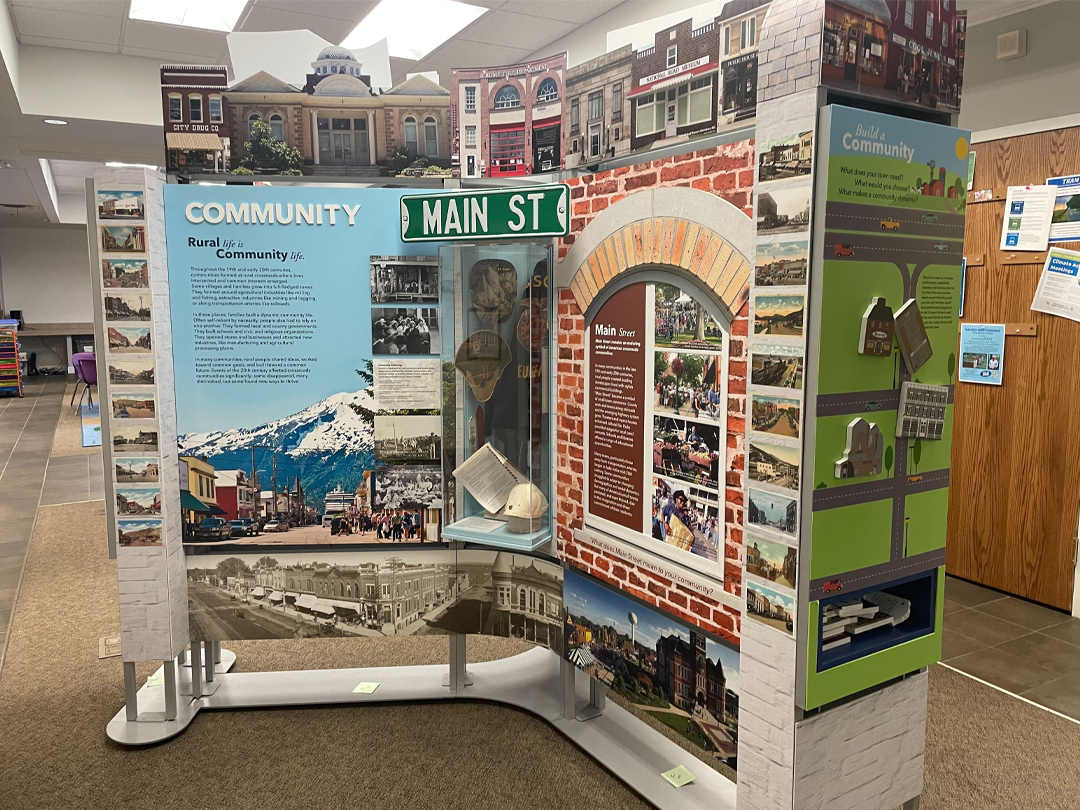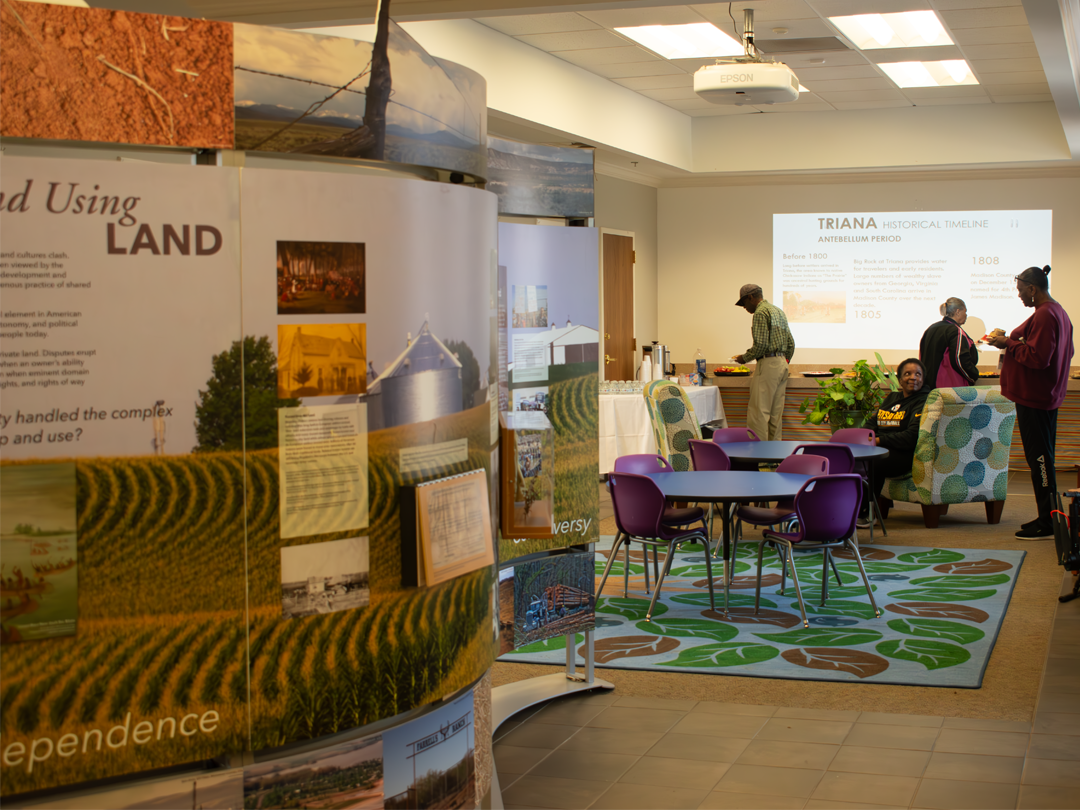
Smithsonian Traveling Exhibition Highlighting the Changing Landscape of Rural America Coming to Triana
The Smithsonian’s Museum on Main Street, in cooperation with Alabama Humanities Alliance, presents “Crossroads: Change in Rural America" hosted by the Triana Public Library and The Historic Triana Health Clinic. The Triana Historical Society has partnered with the Library to bring this exhibition examining the evolving landscape of rural America to North Alabama. The exhibit runs from February 14 through April 12, 2024.
The exhibition will be located at the Triana Health Clinic (297 Stone St. SW, Madison, AL) and open to the public on Tuesdays, Thursdays, and Fridays from 1:00 p.m. to 6:00 p.m. and Saturdays from noon to 4:00 p.m. Select portions of the exhibition will be on display at the Triana Public Library during regular operating hours.

The newly restored Triana Health Clinic and the surrounding community have been expressly chosen by the Alabama Humanities Alliance to host “Crossroads” as part of the Museum on Main Street program—a national/state/local partnership to bring exhibitions and programs to rural cultural organizations. The exhibition will tour several communities across Alabama.
“Crossroads” explores how rural American communities changed in the 20th century. From sea to shining sea, the vast majority of the United States landscape remains rural, with only 3.5% of the landmass considered urban. Since 1900, the percentage of Americans living in rural areas has dropped from 60% to 17%. Triana itself saw a growth of 482.7 percent between the 2010 and 2020 censuses, making the community a perfect location for this exhibit, which looks at that remarkable societal change and how rural Americans responded.
 “‘Crossroads’ allows us to reflect on Triana’s history, present, and future, and we are excited to explore what the future may hold for our community,” said Betty Williams from the Triana Historical Society. “We want to convene conversations about what makes our community unique and have developed local exhibitions and public programs to complement the Smithsonian exhibition. Specifically, we look forward to spotlighting significant figures in the community to coincide with Black History Month.” Local schools and homeschooling organizations are encouraged to schedule field trips during the six weeks that the exhibit is in Triana.
“‘Crossroads’ allows us to reflect on Triana’s history, present, and future, and we are excited to explore what the future may hold for our community,” said Betty Williams from the Triana Historical Society. “We want to convene conversations about what makes our community unique and have developed local exhibitions and public programs to complement the Smithsonian exhibition. Specifically, we look forward to spotlighting significant figures in the community to coincide with Black History Month.” Local schools and homeschooling organizations are encouraged to schedule field trips during the six weeks that the exhibit is in Triana.
Designed for small-town museums, libraries, and cultural organizations, “Crossroads” will serve as a community meeting place for conversations about how rural America has changed. With the support and guidance of state humanities councils, these towns will develop complementary exhibits, host public programs, and facilitate educational initiatives to raise people’s understanding of their own history, the joys, and challenges of living rural, how change has impacted their community, and prompt discussion of goals for the future.

The exhibition is part of Museum on Main Street (MoMS), a unique collaboration between the Smithsonian Institution Traveling Exhibition Service (SITES), state humanities councils across the nation, and local host institutions. To learn more about “Crossroads” and other Museum on Main Street exhibitions, visit www.museumonmainstreet.org.
Support for MoMS has been provided by the U.S. Congress.
